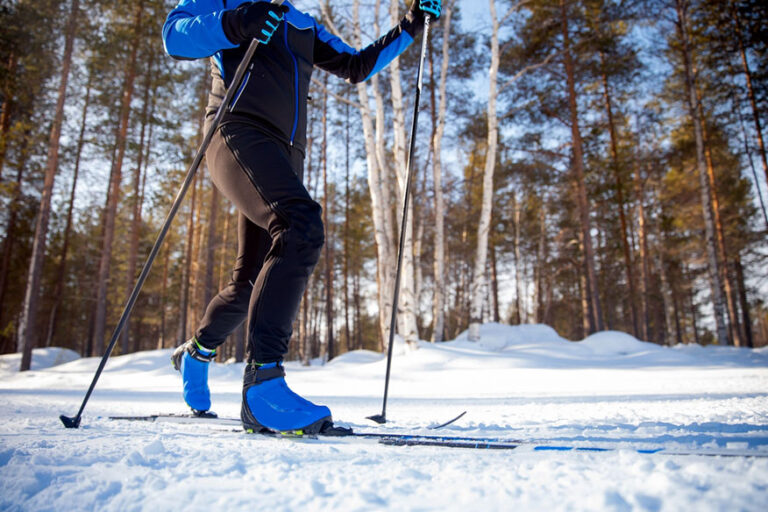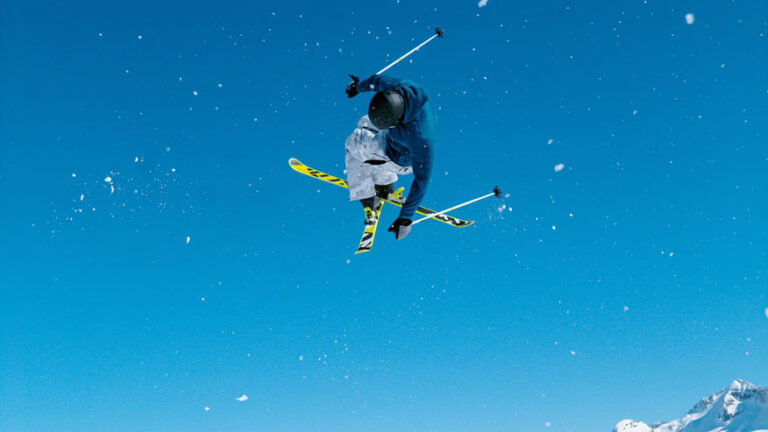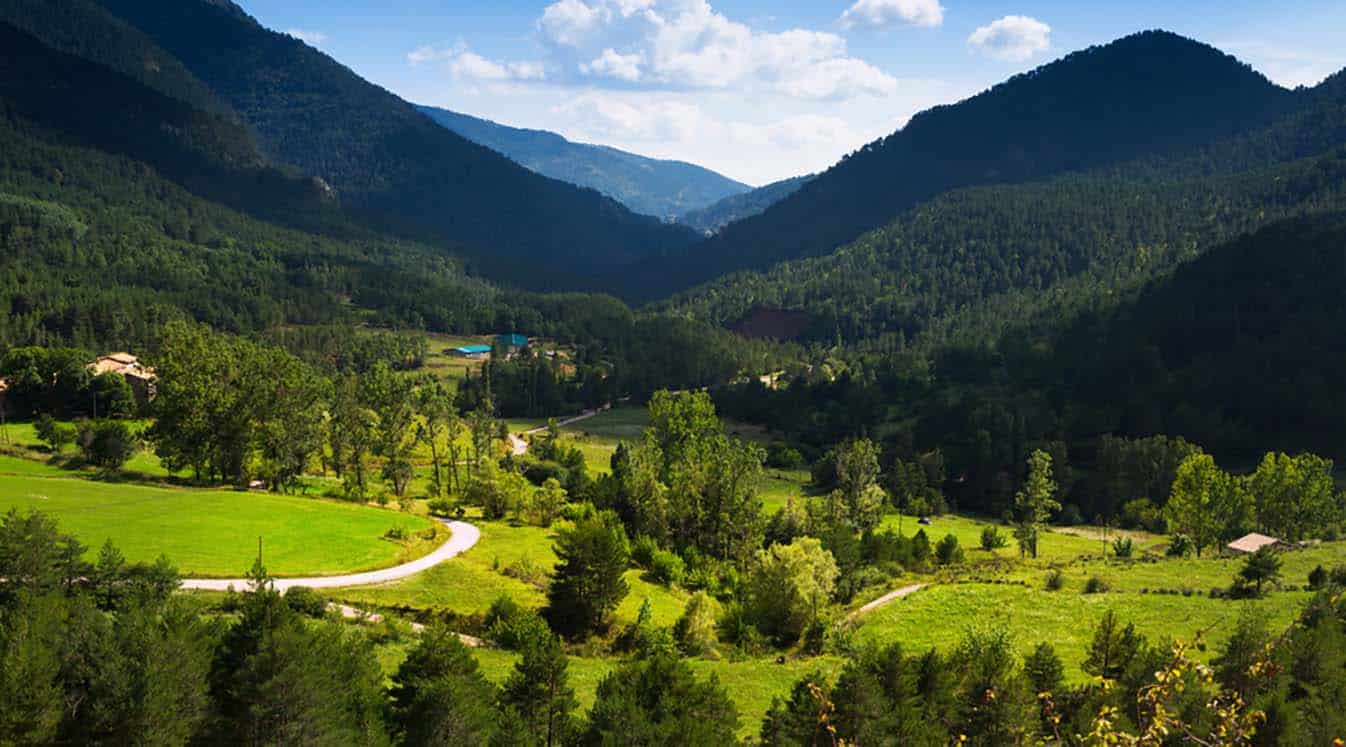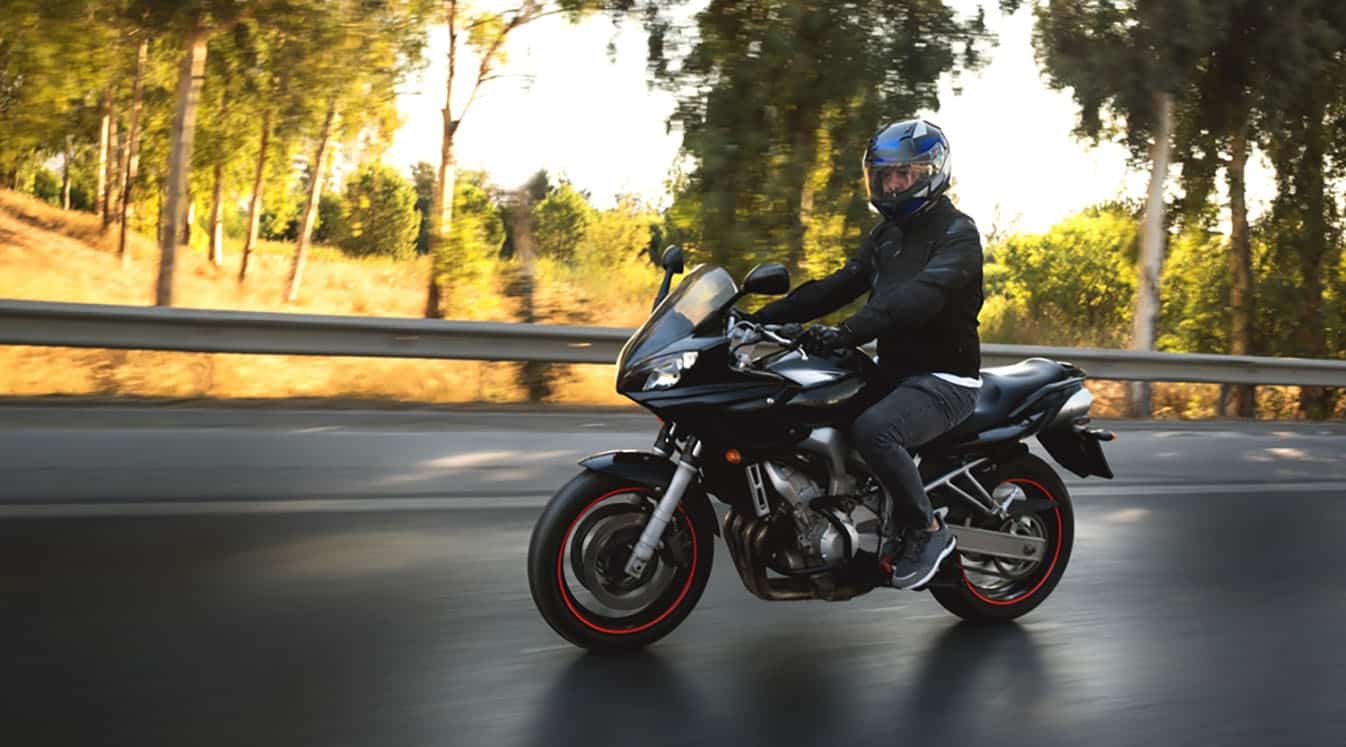There’s more than one way to have fun on a pair of skis. You’ve probably seen riders cruising by on the trail doing all kinds of tricks and stunts. Others keep away from the mountain altogether, preferring the quiet isolation of roads less traveled.
If you prefer to be in a group setting, use the Cardo Packtalk Outdoor to communicate with your companion wirelessly as you navigate the terrain. Just speak into the device to pick up the conversation from where you left off.
Whether you ski with friends or hit the backcountry solo, skiing falls into one of several categories, each representing a different sport or activity. Learn about the different types of skiing and how they compare to find the right thrill level for your next winter adventure.
Stay Connected with Ski Helmet Communication from Cardo
Types of Skiing
1. Downhill Skiing
Maneuvering down the side of a mountain on a pair of sleek boards is what most of us imagine when we hear the word “skiing.” Downhill skiing is the most popular variation of the sport. It is also the fastest way to travel compared to other types of skiing.
The mechanical lift takes skiers to the top of the mountain. They then lean forward as they glide down to the bottom, avoiding obstacles along the way.
Most resorts have clear, well-maintained downhill trails that make it easy to get where you’re going. You’ll need rigid skis with sloped edges and fixed bindings to control the descent. Keep your feet parallel as you turn with your pole elevated unless you need to come to a sudden halt. You’ll find long lines at some resorts with different age groups and experience levels.
2. Cross-Country Skiing
Ready for a workout? Cross-country skiing is done on flat trails, usually in remote areas. Skiers push through the snow using their poles and leg muscles instead of relying on gravity. It doesn’t have to be done at a ski resort. Many people enjoy this activity close to home. With fewer crowds, it’s a great way to experience the solitude of nature.

Source: Parilov/Shutterstock.com
There are two types of cross-country skiing: classic cross-country skiing, when the boards slide back and forth against the ground, and short skiing, when skiers kick up in the air to move forward. Both forms can burn up to 472 calories an hour, over a hundred more than downhill skiing.
3. Backcountry Skiing/Off-Piste Skiing
Backcountry skiing is done on ungroomed trails with little to no markings. Instead of following a set path, skiers carve through uncharted territory and what can be challenging terrain. Skiers can ride the lift to the top of the mountain and ski off-trail to the bottom or use hiking and climbing gear to forge their way to the top before finding their way back down.
Use the proper gear to navigate the terrain safely. Learn about the required backcountry ski gear to prepare for the unpredictable.
Read Our Guide on Backcountry Ski Essentials
4. Alpine Touring
Alpine touring, or alpine skiing, is the complete backcountry experience. Skiers use hybrid fixed and free-heel skis, switching seamlessly between the two. They hike up the mountain with climbing skins and their feet untethered. When they reach the top, they bind their feet to the skis before descending.
5. Telemark Skiing
Telemark skiing can be done on or off the trail, depending on your preference. With the skier's heels locked to the skis, they use a lunging motion with their knees bent to turn where they want to go. One leg sticks out, guiding the skis to the left or right.
6. Ski Mountaineering
Ski mountaineering combines alpine skiing with rock climbing. Skiers wear skis slung over their shoulders and use an ice axe, rope, anchors and other climbing essentials to hike to the top before descending on skis. The challenge makes the downhill trip all the more exhilarating.
If you love the thrill of ice or rock climbing, ski mountaineering will put your skills to the test.

Source: Flystock/Shutterstock.com
7. Freestyle Skiing
Traditionally mixed with downhill skiing, freestyling involves jumps, tricks and other aerial maneuvers. Skiers use half-pipes or spring off the side of a hill or cliff to get some air. It can feature flips, spins and other acrobatic moves as the skier moves through the air before ideally landing in an upright position. The price of failure can be steep. Wear knee, shoulder and elbow pads under your gear to reduce your risk of serious injury.
8. Adaptive Skiing
This category is designed for the differently abled community. Individuals with physical limitations use special ski equipment to enjoy downhill, cross-country or backcountry skiing.
9. Nordic Skiing
Nordic skiing gets its name from the Norway region, where it was once used as a means of transportation over the ice and snow. Skiers have the toes of their ski boots attached to the ski bindings and use their heels to kick themselves forward. It’s used for cross-country, telemark and alpine touring. Without much of a drop, there’s no lift, forcing skiers to provide momentum.
Skiing like the Nordics can feel like ice skating as you weave the inside of your skis in and out.
What Is the Best Form of Skiing for You?
Choosing a type of skiing depends on your skill level and what’s available in your area. Most ski resorts cater to downhill skiing because it tends to be the most popular type. It’s also one of the easiest to learn if you’re a beginner. Let gravity guide you down the mountain instead of pushing yourself forward. Stick to beginner runs marked with green circles to learn how to brake and turn before moving on to more challenging trails.
Cross-country is also great for beginners but is more physically taxing. It’s easier to control your speed, and you don’t have to wait in line for the lift. However, you’ll need stamina and leg power to get moving. Ride in someone else’s tracks to reduce resistance. Nordic cross-country is also easy to learn but can take some getting used to if you’re not accustomed to traditional bindings.
Freestyle, alpine, backcountry and telemark skiing are generally harder to learn and are best suited to ski moguls and those with prior experience.
Experience the Different Types of Skiing
Every type of skiing has something special to offer. The Olympics includes nearly every type mentioned, including men's and women's events. Try all the different methods to enhance your knowledge of the sport while exploring areas that aren’t on the map. Use the proper ski equipment to stay safe wherever the trail takes you.





